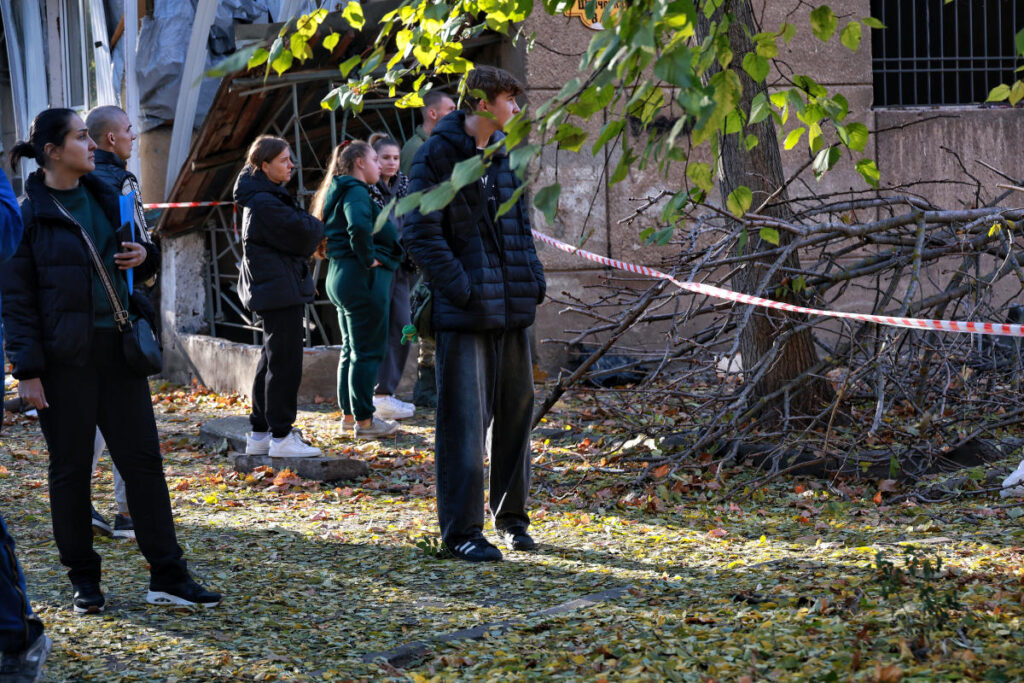On the 1,000th day since Russia commenced its full-scale invasion of Ukraine, significant developments unfolded in the ongoing conflict, particularly regarding missile strikes involving U.S. technology. Ukrainian military sources reported successfully targeting a Russian weapons depot in the Bryansk region using ATACMS missiles, recently cleared for Ukraine’s use by President Biden. This usage of U.S.-made ATACMS, capable of striking targets up to 190 miles away, marks a notable escalation, allowing Ukraine to attack deeper into Russian territory. Meanwhile, the Russian Defense Ministry claimed to have intercepted five of the six missiles launched, asserting that debris from the attack caused minor damage but resulted in no casualties. The reported strike coincided with ongoing violence in Ukraine, where a separate Russian attack in Odesa left ten people dead.
The strike in Bryansk and the ongoing series of military assaults highlight the devastating human cost of the war, characterized by relentless exchanges of artillery and missile fire. Just prior, Odesa endured a dual assault that culminated in both civilian and infrastructural damage, underscoring the war’s toll on everyday life in Ukraine. Reports from Ukrainian officials indicate that the cumulative effects of these strikes are exacerbating an already dire humanitarian situation, particularly as civilian areas become frequent targets. The newly authorized ATACMS provide Ukraine with a critical opportunity for retaliation, raising the stakes of the conflict further.
Russia’s response has been increasingly aggressive, with officials warning that U.S. involvement in Ukraine’s military operations represents a dangerous escalation. President Vladimir Putin previously articulated that American support, particularly through new missile capabilities, suggests a much broader conflict that could involve NATO and the U.S. directly. Moscow’s admonition paints a picture of a slip toward a larger conflagration, as senators and military leaders alike voiced their concerns over potential global repercussions. The Kremlin’s rhetoric indicates an awareness of the strategic implications of Ukraine’s ability to strike within Russian borders—a factor that could provoke severe reactions from Moscow.
Casualty figures from both sides illustrate the devastating toll of the ongoing conflict. Estimates suggest that Ukrainian military losses may approach around 70,000 soldiers, while Russian fatalities could exceed 100,000, reflecting the significant dimensional disparity in military manpower—given that Russia’s population is over three times larger than Ukraine’s. Senior military figures, like Colonel Maksym Balagura, have openly acknowledged the challenges presented by this disparity, underlining the strains placed upon Ukraine’s military resources as the war continues without a decisive resolution in sight.
Adding to Ukraine’s challenges is the situation regarding North Korean military support for Russia. Reports indicate that more than 10,000 North Korean soldiers have already been integrated into Russian forces, with potential future increases possibly reaching 100,000 as the two nations enhance their security cooperation. This development raises alarm over an intensifying collaboration between historically adversarial states, potentially altering the dynamics of the battlefield. Ukraine’s leadership is acutely aware of the growing threat, prompting calls for increased military support from Western allies as they face an enemy that becomes progressively fortified by external resources.
In summation, the multi-faceted conflict between Russia and Ukraine remains at a critical juncture as both sides navigate an increasingly complicated geopolitical landscape. The recent use of U.S. ATACMS missiles signifies a major development in Ukraine’s defensive and retaliatory capabilities, while Russia’s escalating rhetoric and military support from North Korea illustrate a stark willingness to prolong the conflict. As civilian casualties mount and the humanitarian situation deteriorates, the stakes continue to rise, drawing attention to the prospect that the Russian-Ukrainian war could be heading toward more profound military engagements involving global powers like the U.S. and its NATO partners. The outcome of this ongoing strife will likely shape regional security architecture and international relations for years to come.

